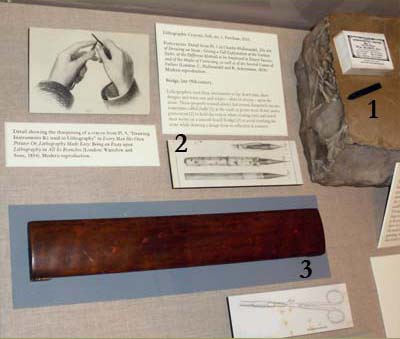1. Lithographic Crayons, Soft, no. 1. Purchase, 2010.
2. Portcrayons. Detail from Pl. 1 in Charles Hullmandel, The Art of Drawing on Stone: Giving a Full Explanation of the Various Styles, of the Different Methods to be Employed to Ensure Success, and of the Modes of Correcting, as well as of the Several Causes of Failure (London: C. Hullmandel and R. Ackermann, 1824).
3. Bridge, late 19th-century.
Lithographers used these instruments to lay down tints, draw designs, and write text and scripts – often in reverse – upon the stone. Those properly trained always had several sharpened crayons, sometimes called chalk [1], at the ready as points wore down; used a portcrayon [2] to hold the crayon when creating tints; and rested their wrists on a smooth board (bridge) [3] to avoid touching the stone while drawing a design from its reflection in a mirror.
Click image for larger view.
